By Chris and Eric Martinez, CISSN, CPT, BA. The lovely world of cardio, we have to love it right? Cardio has countless benefits for the human body, so it must be good for us, right? How else do you think all the celebrities stay so skinny and “toned?”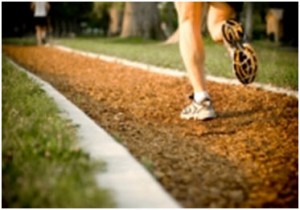
How many times have you seen people get to the gym and hop on a cardio machine and just gas themselves, and not to mention go do some resistance training right after. Or what about when someone gets done from an intense lifting session, then goes off and does an intense cardio session?
We know you’ve seen this before and we are not going to get into the psychology of why people do this because that could be a whole other article itself. We are more focused on is it optimal to perform cardio pre and post workout? With a specific focus on which cardio modality (type of cardio you do) is the best to perform to avoid the interference effect of strength, power, and hypertrophy gains? But before we give you the answer, it’s vital that we always have to take people’s goals, activity level, overall health, and training experience into consideration before anything. So please read this with an open mind and a non-black and white answer, all or nothing approach.
What’s This Interference Effect Thing?
When we refer to the interference effect, we are talking about the interference of strength, power, and hypertrophy gains (muscle growth) when doing cardio pre or post workout. This topic of discussion has been floating around for quite some time now, whether concurrent training is optimal or not.
We all have our biased opinions, but what is the correct cardio modality to do pre and post workout and should we even be doing cardio pre or post workouts? That is the million dollar question that many of us would like to know.
Why continue to keep robbing your hard earned gains and progress if you don’t need to. Instead, why not continue to maximize your overall potential the correct way instead of shooting yourself in the foot? As always, we bring scientific based evidence to the table to get to the bottom of these popular topics, because the research doesn’t lie folks.
Before we delve into the research, we want to quote what Brad Schoenfeld said:
“There is no one cookie-cutter recommendation I can provide that will be ideal for everyone. People have varying responses to exercise programs. Large inter-individual differences are seen in any research protocol. Thus, in giving advice on a topic such as this, I can only provide general recommendations that must be individualized based on a variety of genetic and environmental factors. This is the essence of evidence-based practice, which should form the basis of every fitness professional’s decision making process.” (1)
We can’t agree more with this statement and we truly feel this statement is a legitimate and valid way of viewing such a topic like this one.
Cardio Modalities
We are certain we can all agree that there are numerous different cardio modalities out there today. To name a few modalities that have more ground-reaction force with higher impact are:
Pretty much all the badass cardio workouts that we look forward to doing.
Cardio modalities that minimize ground-reaction forces are:
- Cycling bikes
- Treadmills
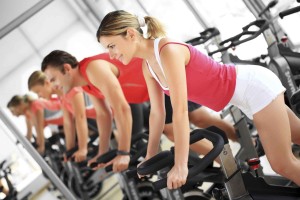
- Ellipticals
- Various machine based equipment
The stuff we like to watch TV on or read magazines 😉
These are all great choices whether you use them in the form of HIIT or LISS, but which modality is more optimal to prevent the interference effect and when should you do these you ask? Let’s delve into some research shall we.
Should you do cardio pre or post workout?
Layne Norton and Jacob Wilson claim that when you choose a cardio modality such as running or sprinting after a resistance training bout, the ground-reaction force (think sprints) and distance causes more muscle damage as opposed to a modality with less impact such as cycling instead. Cycling seems to be more similar to hip and knee flexion as opposed to running because it’s biomechanically interfering with squat and leg press patterns. This muscle damage seems to be coming from the eccentric components when running and sprinting (2).
Norton and Wilson make a valid point in the essence that if you are going to do cardio post workout, make sure you do it in the form of an opposing muscle group. Let’s say you did a grueling lower body workout, you would then want to do cardio in the form of using your upper body, something like rope slams because otherwise if you go and run or do sprints you are going to get a complete interference effect and possibly get injured.
After resistance training you have mTOR (cell growth) being ramped up and protein synthesis (making of new proteins) being turned on and when you do cardio after resistance training you get such high drastic rises in AMP kinase (signaling cascade for ATP production) that it ends up shutting off protein synthesis. In easier terms, cardio after weights interferes with the muscle growth phase and a good analogy is after training you turn the faucet on for muscle growth and when too much cardio is being done or after training, it shuts the faucet off.
As for pre workout cardio, this tends to be a little trickier than post workout cardio and we say this because it really depends on a lot of factors such as: What muscle groups are you training that day? What form of cardio are you doing pre workout (low, moderate, or high intensity)? What modality will you use? Are you in a low calorie and glycogen depleted state?
A Study in the Medicine and Science in Sports and Exercise shows 30 minutes of jogging pre workout decreases volume of spinal discs and leads to a reduction in the amount of weight you can load on your back (3). For example, if you did a moderate-high intensity cardio bout such as jogging before squats it’s probably not a good idea because it will lead to decrements in strength and negatively affect your squats. Jogging shows to have a lot of muscle damage in the quads, hams, and glutes, so this will definitely affect your squat game.
A 2012 study in the International Journal of Sports Nutrition showed extended periods of moderate volume concurrent strength, power, and endurance training interferes with explosive strength development (4). This is not something you want if you’re trying to increase your 1 rep max on squats and deadlifts.
The data is pretty clear that performing moderate-high intensity cardio pre workout will lead to decrements in strength and power with your resistance training. Perhaps doing cardio earlier in the day and performing resistance training later in the day will not have a negative impact on either the performance or the measured markers of the exercise induced growth stimulus the resistance training session will have. However, we highly encourage doing resistance training and cardio on separate days as this would be the most optimal route to go.
Is there really an interference effect?
In a study by Wilson et al. a large body of research indicates that combining aerobic and resistance exercise (concurrent training) has a negative effect on gains in muscular strength and size (5). There is credence to the underlying concept that catabolic processes predominate to a greater extent in aerobic training, and concurrent exercise therefore has the potential to impair muscular gains. There is even evidence that cardio can blunt the satellite cell response (helps with muscle growth) to a bout of resistance exercise and therefore potentially impair the protein-producing capacity of muscle (6). With that said, why are people still considering doing cardio pre or post workout if clearly the evidence indicates that it can potentially inhibit muscular gains, strength, and power?
What if you could avoid the interference effect?
Burn more calories, increase muscle, and acutely increase your metabolic rate, sounds good, right? This is where the famous HIIT cardio would come into play. When you think of HIIT, high intensity and high stress should be taken into consideration. What we have to keep in mind is that stress has to be recovered from, just like the stress from weight training. Last time we checked HIIT cardio is done during the week along with resistance training. If you are still recovering from a HIIT cardio session to the point that it affects your ability to lift weights, then it can be detrimental to your gains. If there is a significant eccentric component (sprinting and running), or high level of impact, HIIT can cause problems in your overall training and potentially lead to chronic overuse injuries. You have to be cautious and smart when incorporating HIIT into your training protocol because it seems that the work to rest ratios in HIIT intervals are very similar to resistance training sets and your number one focus should be on progressive resistance training.
Here are some ways to avoid the interference effect.
- Schedule your cardio around your resistance training, especially HIIT cardio
- If your number one priority is resistance training, then perform cardio modalities that minimize ground-reaction forces
- Perform a cardio modality that is opposite of the muscle group your training. For example, if you do train legs then do an upper body dominate form of cardio and vice versa
- If you absolutely have to do cardio the same day as your resistance training and you can’t find a cardio modality opposite of the body part you trained then make sure to keep the intensity to low-moderate
Wrapping this up
We believe that the research is pretty clear here when it comes to this particular topic. Clearly there is no black and white answer, sorry to disappoint, but at least we have a great indication of what to do and when not to do it. It’s tough to predict that anyone can avoid any interference effect when it comes to aerobic or anaerobic training. Just like anything else you have to compensate something. We are not all built like machines and able to handle the same workload as others. Genetics always play a vital role in how someone responds to training. Other factors such as nutrition, stress, sleep, occupational activity, ect. All must be taken into account. Refer back to Brad Schoenfeld’s quote if needed, it pretty much tells you there are only general recommendations that can be given here. The best thing to do is choose the correct cardio modality that suits your training and goals. Always train hard, think logically, and but most importantly train smart.
References:
(1) Schoenfeld, AARR Research Review. Cardio Roundtable Discussion. February and March 2013.
(2) Norton, L & Wilson J. Muscle college radio with Dr. Layne Norton & Dr. Jake Wilson. http://www.rxmuscle.com/2013-01-11-01-57-36/muscle-college/7694-muscle-college-3-12-13.html
(3) Kingsley, MI., et al., Moderate-Intensity Running Causes Intervertebral Disc Compression in young adults. Med Sci Sports Exerc, 2012.
(4) Mikkola, et al., Neuromuscular and cardiovascular adaptations during concurrent strength and endurance training in untrained men. Int J Sports Med. 2012.
(5) Babcock, L, Escano, M, D’Lugos, A, Todd, K, Murach, K, and Luden, N. Concurrent aerobic exercise interferes with the satellite cell response to acute resistance exercise. Am. J. Physiol. Regul. Integr. Comp. Physiol. 302: 2012.
(6) Wilson, J.M., et al., Concurrent Training: A Meta Analysis Examining Interference if Aerobic and Resistance Exercise. J Strength Cond Res, 2011.
About The Authors:
Chris and Eric Martinez, CISSN, CPT, BA, also known as the “Dynamic Duo” operate a world class personal training and online training business “Dynamic Duo Training,” They’re also fitness and nutrition writers, fitness models, and coaches that love helping people reach their goals. Their philosophy is “No excuses, only solutions.”
Visit them at:
Dynamic Duo Training
Blogsite
FaceBook Page
Twitter
YouTube Channel

 About Author: Livia Ly, MS, RD, LDN is a registered dietitian and nutritionist trained both in Brazil and in the United States. She is the founder of Nutrily, LLC http://nutri.ly/ a nutrition consultancy company that follows a holistic approach.
About Author: Livia Ly, MS, RD, LDN is a registered dietitian and nutritionist trained both in Brazil and in the United States. She is the founder of Nutrily, LLC http://nutri.ly/ a nutrition consultancy company that follows a holistic approach. About Editor: Melza van Roijen, MS is a volunteer at Nutrily, LLC. “I completed my B.S. in psychology at the College of Charleston in 2010 and my M.S. in behavioral neuroscience at Tulane University in 2014. I have worked in many different research labs over the years and have investigated topics such as drugs of addiction, traumatic brain injury, neuroendocrinology and spatial cognition.”
About Editor: Melza van Roijen, MS is a volunteer at Nutrily, LLC. “I completed my B.S. in psychology at the College of Charleston in 2010 and my M.S. in behavioral neuroscience at Tulane University in 2014. I have worked in many different research labs over the years and have investigated topics such as drugs of addiction, traumatic brain injury, neuroendocrinology and spatial cognition.”
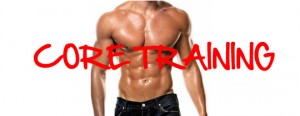


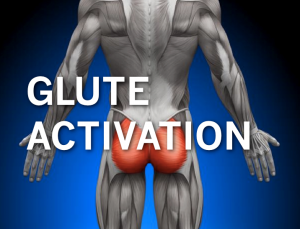
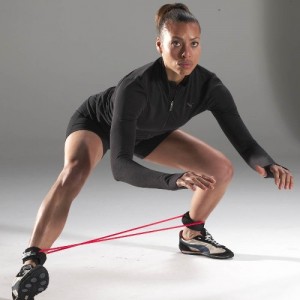
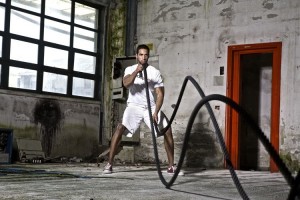
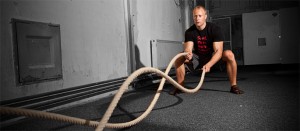

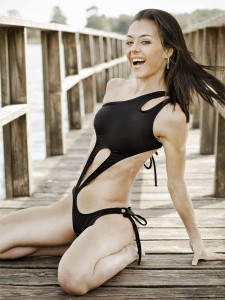


 Heavy lifting is really more when one is lift for either a one max rep (the heaviest weight they can do for one repetition) or only a few repetitions. This is not typically your weight loss, body shaping weight training protocol. For general conditioning and weight reduction, you still have to have enough weight to make it challenging, but it still isn’t considered “heavy”.
Heavy lifting is really more when one is lift for either a one max rep (the heaviest weight they can do for one repetition) or only a few repetitions. This is not typically your weight loss, body shaping weight training protocol. For general conditioning and weight reduction, you still have to have enough weight to make it challenging, but it still isn’t considered “heavy”.
